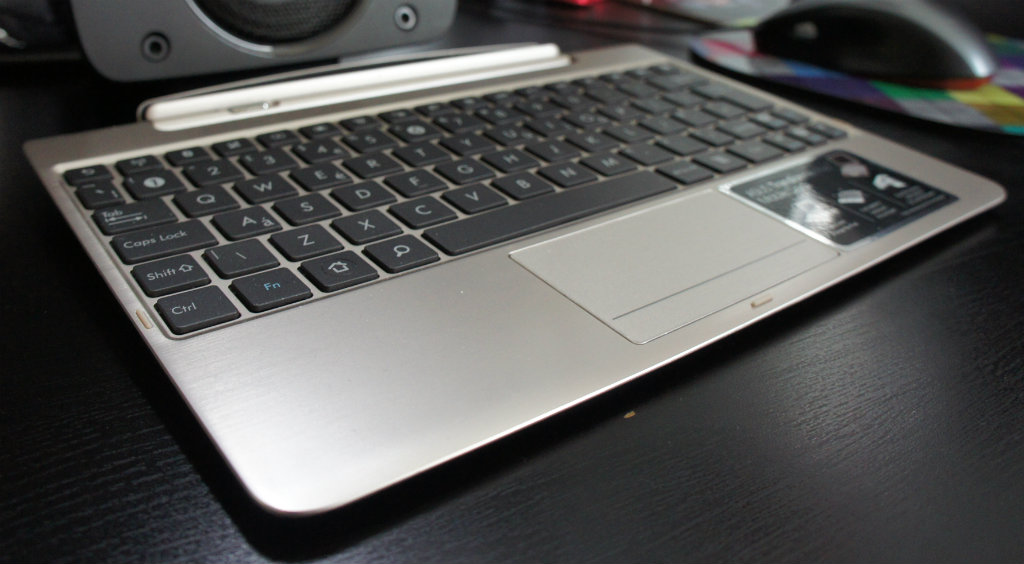Asus Transformer Pad Infinity 700 review
A hybrid Android Ice Cream Sandwich device, which features a 10.1in Super IPS+ display, an NVIDIA quad-core processor, but has a steep £600 asking price.
The best premium Android tablet on the market, the Infinity 700 has a superb display, a powerful processor and tons of storage, which can be expanded. However, you'll have to wait for the Jelly Bean update, the £600 price makes it a significant investment and it still doesn't have all the functionality of a Windows laptop.
A trackpad completes the tablet-meets-laptop design and, like the keyboard, it doesn't feel as if Asus just tacked it on to differentiate itself from the iPad. The moment you run your finger across it, a mouse cursor appears like in Windows 8, which proves useful when you need to insert a couple of letters into a word - a task that can prove fiddly when using touch. A long button at the bottom also proves its worth, as a left click selects an option and the right takes you back a step. Although the mouse buttons are not separated, we never found ourselves pressing the wrong side.

The keys take time to get used to, but make content creation much easier
A keyboard and trackpad wouldn't be useful if there's nothing to use them with. Asus has preloaded the Infinity 700 with Polaris Office and SuperNote, allowing you to create basic documents with little fuss. Polaris Office is basic and we found ourselves using the Google Drive app to access Google Documents. As a portable Android tablet we lent towards using the cloud, especially when you can view documents offline. But if you wish to edit them, you'll end up back in the arms of Polaris Office because you can only edit offline Google Documents via the Chrome desktop browser. Also, some Google Documents such as Google Presentations cannot be viewed offline.
Android Ice Cream Sandwich
Running Android 4.0 Ice Cream Sandwich, the Infinity 700 is out-of-date as the Nexus 7 is shipping with 4.1 Jelly Bean. Asus has announced its Transformer range will be getting the upgrade in the "coming months".
For a device that costs 600 you'd expect the latest software to be pre-loaded. But Ice Cream Sandwich isn't too far behind. It's fast and it's multi-tasking capabilities surpass the equivalent for iOS and Windows Phone. Nearly all settings can be quickly accessed from the bottom right menu, too, which saves burrowing into the correct option menu - something we found ourselves doing a lot on older Android devices.
A number of shortcuts have been added to the home screen, so you can quickly jump to the browser, YouTube, Camera, Gallery, SuperNote, Play Music, Play Store and Gmail. Should you want to be more efficient, Android, being the highly customisable, allows you to tailor all shortcuts. So whether you want a weather widget or just a link to all your most used applications on the home screen, or on any of the four other displays accessed by swiping either left or right, a simple press and hold will usually bring up the relevant customisation options to do this.
Sign up today and you will receive a free copy of our Future Focus 2025 report - the leading guidance on AI, cybersecurity and other IT challenges as per 700+ senior executives
-
 Trump's AI executive order could leave US in a 'regulatory vacuum'
Trump's AI executive order could leave US in a 'regulatory vacuum'News Citing a "patchwork of 50 different regulatory regimes" and "ideological bias", President Trump wants rules to be set at a federal level
By Emma Woollacott Published
-
 Microsoft Excel is still alive and kicking at 40 – and it's surging in popularity as 82% of finance professionals report ‘emotional attachment’ to the spreadsheet software
Microsoft Excel is still alive and kicking at 40 – and it's surging in popularity as 82% of finance professionals report ‘emotional attachment’ to the spreadsheet softwareNews A recent survey found Gen Z and Millennial finance professionals have a strong “emotional attachment” to Microsoft Excel
By Emma Woollacott Published
-
 LastPass hit with ICO fine after 2022 data breach exposed 1.6 million users – here’s how the incident unfolded
LastPass hit with ICO fine after 2022 data breach exposed 1.6 million users – here’s how the incident unfoldedNews The impact of the LastPass breach was felt by customers as late as December 2024
By Emma Woollacott Published